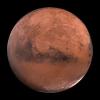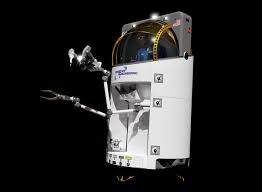
Breaking News
 Wash Post Editorial Board Turns Against Climate Agenda?!
Wash Post Editorial Board Turns Against Climate Agenda?!
 One Year Ago I Predicted and Described in Detail Huge Mars AI Plans that Elon Musk Confirmed...
One Year Ago I Predicted and Described in Detail Huge Mars AI Plans that Elon Musk Confirmed...
 British Teachers To "Spot Misogyny" In Boys And Target Them For Reeducation
British Teachers To "Spot Misogyny" In Boys And Target Them For Reeducation
 Democrats Refuse To Release Post-Mortem Of 2024 Election Loss, DNC Chair Says
Democrats Refuse To Release Post-Mortem Of 2024 Election Loss, DNC Chair Says
Top Tech News
 This tiny dev board is packed with features for ambitious makers
This tiny dev board is packed with features for ambitious makers
 Scientists Discover Gel to Regrow Tooth Enamel
Scientists Discover Gel to Regrow Tooth Enamel
 Vitamin C and Dandelion Root Killing Cancer Cells -- as Former CDC Director Calls for COVID-19...
Vitamin C and Dandelion Root Killing Cancer Cells -- as Former CDC Director Calls for COVID-19...
 Galactic Brain: US firm plans space-based data centers, power grid to challenge China
Galactic Brain: US firm plans space-based data centers, power grid to challenge China
 A microbial cleanup for glyphosate just earned a patent. Here's why that matters
A microbial cleanup for glyphosate just earned a patent. Here's why that matters
 Japan Breaks Internet Speed Record with 5 Million Times Faster Data Transfer
Japan Breaks Internet Speed Record with 5 Million Times Faster Data Transfer
 Advanced Propulsion Resources Part 1 of 2
Advanced Propulsion Resources Part 1 of 2
 PulsarFusion a forward-thinking UK aerospace company, is pushing the boundaries of space travel...
PulsarFusion a forward-thinking UK aerospace company, is pushing the boundaries of space travel...
 Dinky little laser box throws big-screen entertainment from inches away
Dinky little laser box throws big-screen entertainment from inches away
 'World's first' sodium-ion flashlight shines bright even at -40 ºF
'World's first' sodium-ion flashlight shines bright even at -40 ºF
Innovative Single-Person Spacecraft Design Passes Leak Test (Exclusive)

A spacecraft designed to eventually replace many spacewalking astronaut activities passed two key pressure tests in September, representatives from the company building the spacecraft told Space.com in an exclusive interview.
The spacecraft concept from Maryland-based Genesis Engineering Solutions is just big enough for one person; an astronaut would float inside the spacecraft for several hours and use robotic arms to manipulate equipment. Propulsive thrusters would allow the spacecraft to nestle close to a target, similar to NASA's Manned Maneuvering Unit jetpack that was briefly tested on astronaut spacesuits in the 1980s.
Instead of using a bulky spacesuit to do repairs on NASA's future Lunar Orbital Platform-Gateway space station, for example, the Genesis spacecraft operator could use the robotic arms while remaining in relative comfort inside of an enclosed cockpit. [Take a Look Inside Lockheed Martin's Proposed Lunar 'Gateway Habitat for Astronauts]
But long before it flies in space, the Genesis spacecraft must pass several key tests on the ground.




